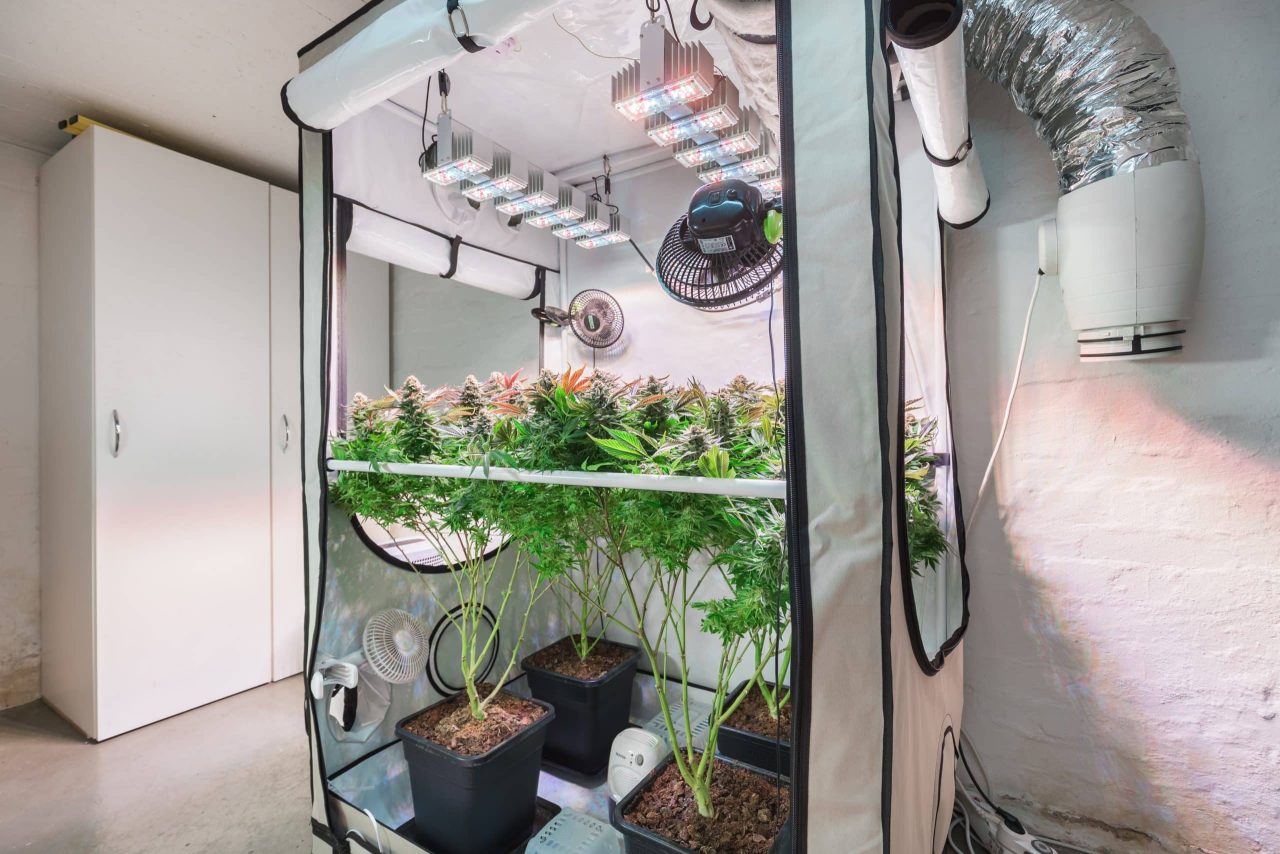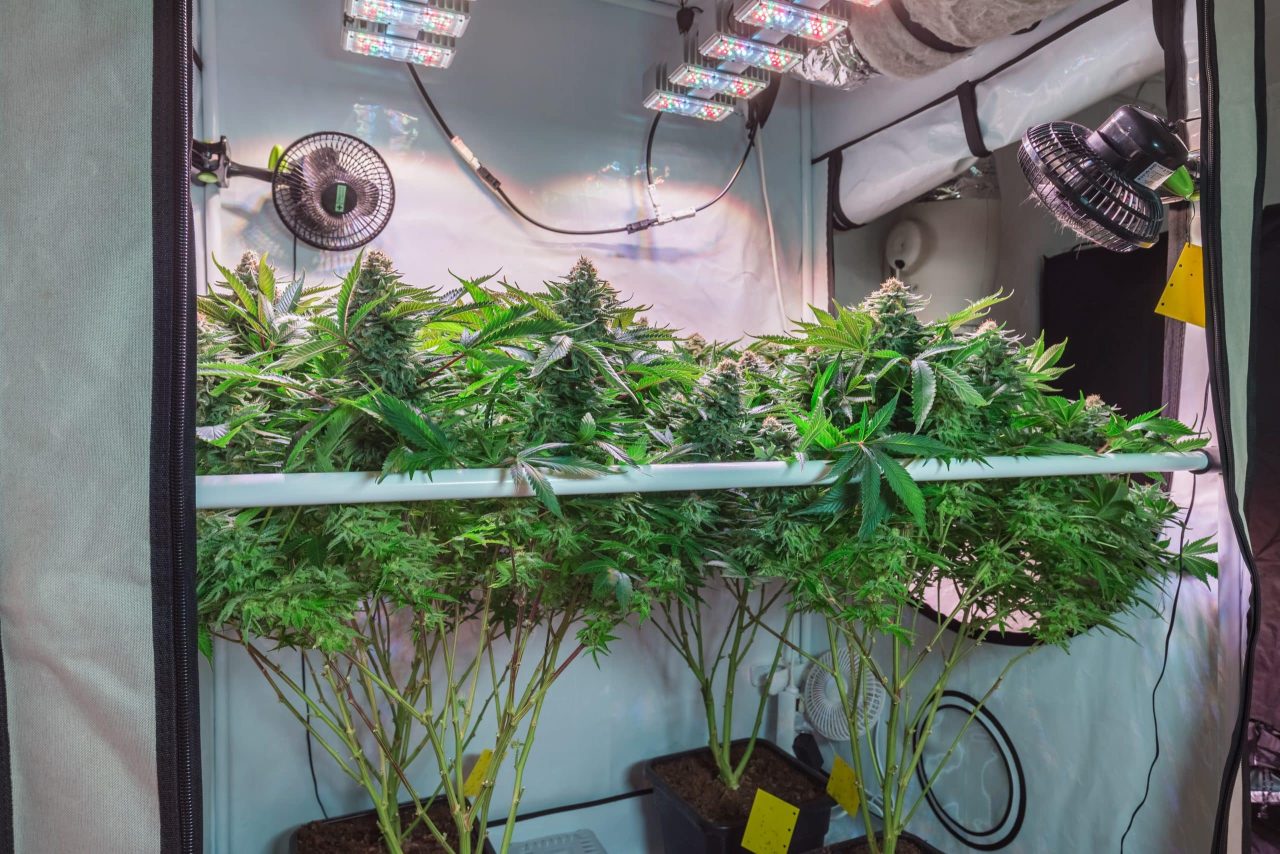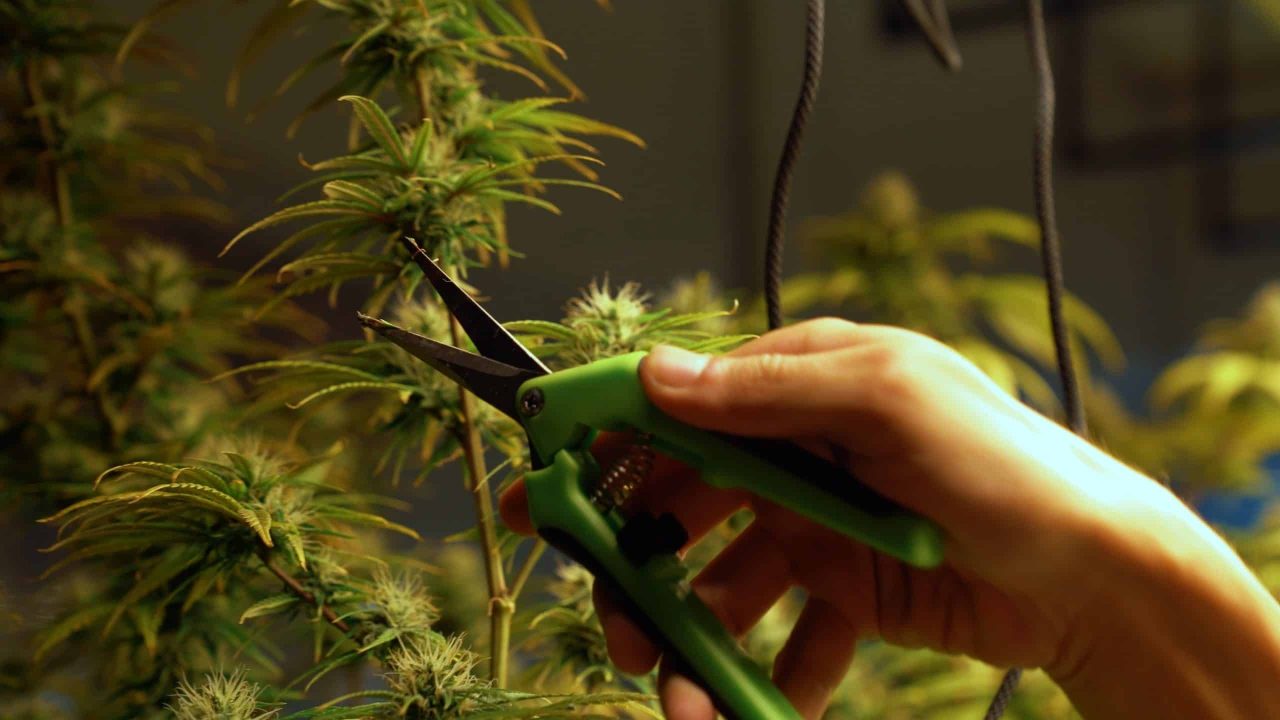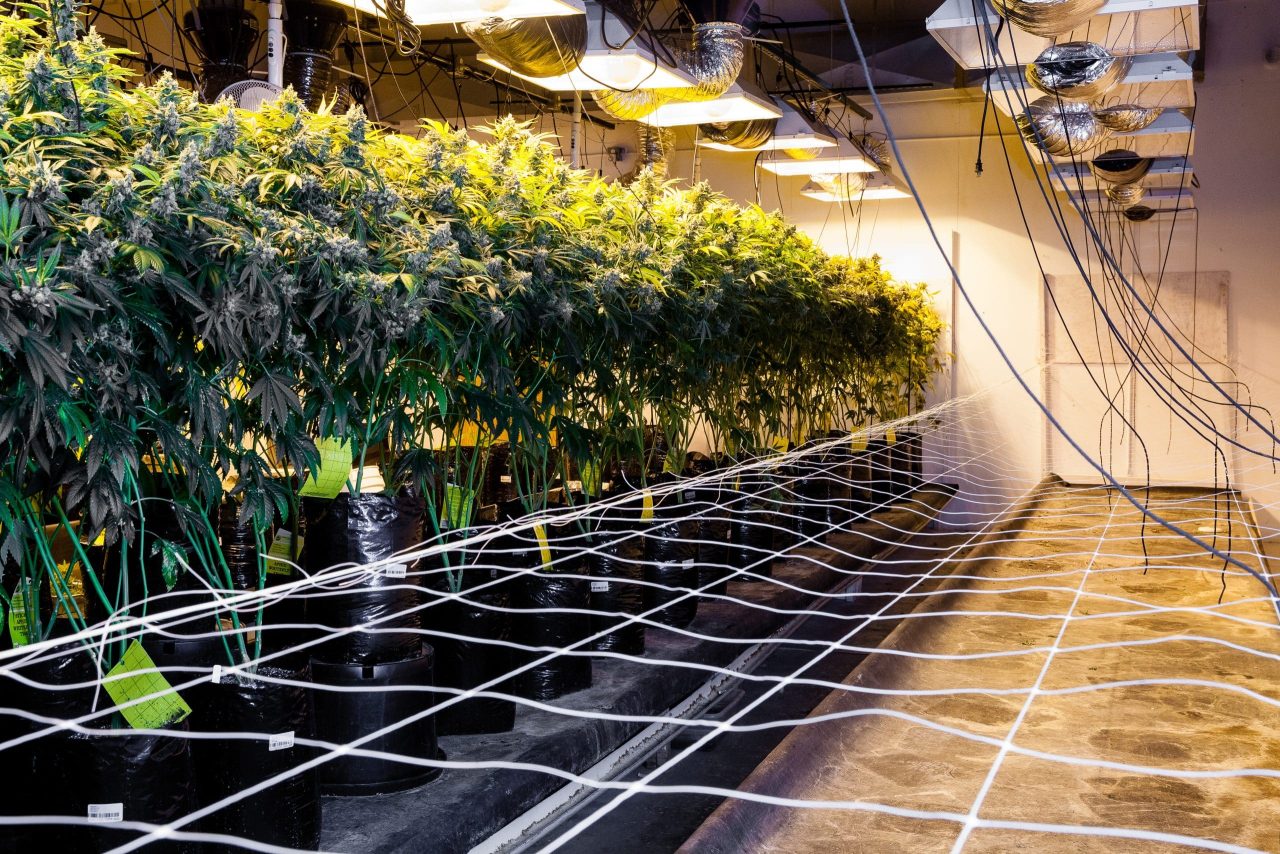Monster cropping is an effective way of producing large buds from blooming cannabis plants. It’s also known as Flowering Clones, and while it’s not as popular as other training methods, it often produces impressive yields. The goal is to take flowering clones and restore them to the vegetative stage, resulting in a thick, bushy plant. This detailed guide explores the monster crop technique to assist you in better understanding how to use it properly.
Understanding the Basics: What Is Monster Cropping Cannabis?
Most growers don’t know what is monster cropping cannabis plants. Well, monster cropping weed is the removal of clones from blooming plants and restoring them to their vegetative state. When the clones bloom, you can take another set of clones, ensuring multiple yields each year while eliminating the need to preserve a mother plant. There are a few more benefits to monster cropping your cannabis plants, and the key advantage is that this strategy allows you to maximize yields as the clones mature into prominent bushy plants with thick buds.

Monster cropping causes the plants to grow short; the branches protrude on the sides, and the buds automatically receive more light. You may also speed up the growth by lollipopping the re-vegged plants or using the ScrOG approach. Additionally, monster cropping weed cannot be done on autoflowering cannabis plants. Strains that naturally grow slowly and short (like most Indica) will not survive such a high stress level. As a result, the monster crop approach is ideal for photoperiod strains that get tall and vigilant.
Unraveling the Science Behind Monster Cropping
Here is a breakdown of the process to better comprehend monster cropping meaning in cannabis cultivation:
- Selecting a mother plant: How late in flowering can you clone during the process? Well, start with a robust and vigorous mother plant around three weeks into blooming.
- Cloning: Next, make marijuana clones of the mother plant by cutting off a branch.
- Re-vegging: Once the clone begins to root, it returns to the vegetative stage under the correct lighting conditions. This transformation, known as re-vegging, causes the clone to sprout several branches.
- Blooming: Once the new plant has matured, it returns to the blooming stage, which results in a larger yield due to the increased number of branches.
The Hidden Benefits of Monster Cropping Cannabis

Below are some of the hidden benefits of monster-cropping weed plants.
Continuous harvests without the need to preserve mother plants
Growers who wish to have consistent harvests usually preserve a mother plant from which to propagate clones. While this is an excellent strategy, maintaining a mother plant is labor-intensive and often necessitates two distinct grow spaces— one for the vegging mother and the other for the blossoming clones. As a result, this isn’t ideal for inexperienced growers or those dealing with limited space. Conversely, monster cropping addresses this issue by letting you reap a staggered harvest by taking clones from a mature flowering plant rather than retaining and caring for a vegging mother.
Compatible with other growing techniques
Experienced cannabis gardeners can use many training strategies simultaneously to drive their plants to their maximum. If you’ve used LST, ScrOG, main-lining, lollipopping, or other cannabis training techniques before, you might be able to combine them with monster cropping to create actual cannabis monsters in your garden!
Better yields
The grower’s abilities determine the effectiveness of any cannabis training strategy, the health of their plants, and the genetic strength of the strains grown. Producers say that monster cropping may boost yields by 10–20% when done correctly and on the right plants.
Maintain high-quality genetics
Clones contain the same genes as the mother plant from which they were derived. They have the same resistances, growth features, and consequences, but their appearance may vary due to additional stress.
Saves money
Growing weeds can be costly. The cost of purchasing viable seeds at the start of each grow dramatically increases the total cost of your cannabis grow. Monster cropping weed allows you to offset some of these expenditures by possibly boosting total yields and obtaining free clones from mature plants.
Common Mistakes to Avoid When Monster Cropping Cannabis
Monster cropping weed can be a highly effective training technique for cultivating plants with unique structures and increased yields. However, growers can make some errors while monster-cropping cannabis, such as:
- Not knowing what you are growing: You should only monster-crop cannabis plants that are feminized and stable; otherwise, you may end up with hermaphrodites or mutants.
- Not using suitable soil: Avoid using soil that is too dense or nutrient-rich, as this can cause root rot or nutrient burn. You should use a light and airy soil mix for good drainage and aeration.
- Bad germination: You should use a sterile and moist medium to germinate your cuttings and keep them warm and humid until they root. You can also speed up the process by using a rooting hormone.
- Not using proper pots: Growers should use large pots to accommodate the rapid growth of their monster crops. Also, use pots with holes at the bottom for drainage and saucers to catch the excess water.
Step-by-Step Guide: How to Monster Crop Cannabis Successfully
Here are step-by-step instructions to monster-crop your cannabis plants.
Step 1
Select the most effective flowering marijuana plant: Around week two of flowering, find your best specimen — one that has grown well and is tall. If you have various strains, you might take several cuttings from each to observe which plants perform best. Ensure the plants you’re picking from are healthy and show no symptoms of disease or deficiency.
Step 2
Disinfect your scissors or knife using the alcohol wipes. Cleanliness will considerably enhance your cloning success! Go to your preferred flowering plant and pick a lower branch. These typically root quicker than the upper branches. To do the cutting, quickly cut diagonally across the stem.

A diagonal cut increases the surface area of the cutting, allowing it to absorb more water and nutrients and establish roots. Also, be sure to take more cuttings than you require. You may expect at least 25% of your clones not to root. Before making each cut, disinfect the tools you are using.
Step 3
Place the stem in the water-filled container immediately after each cutting. The water will seal the incision and keep air out, preventing your clone from dying. You may also use a rooting gel instead of water. You may keep the cutting in the container until roots form or plant it in a rooting media like Rockwool cubes or perlite.
Step 4
To return your clones to a vegetative condition, alter their light cycle appropriately. Most growers use an 18/6 schedule, although anything from 18 to 24 hours of light is sufficient. When your clones begin to re-veg, they will develop unusually, with circular leaves and numerous branches. This odd developing period will last around 3-4 weeks.
Top Tips to Master the Art of Monster Cropping Cannabis
The process of monster cropping can be more complex and requires careful attention to light cycles and plant health. To effectively grow monster crops, keep the following tips in mind:
- Select a healthy mother plant that is in the blossoming stage.
- Take clones around the second or third week of flowering.
- Re-veg the clones for a minimum of two to four weeks.
- Pruning the clones will stimulate bushier growth.
- Monitor the plants closely and adjust the nutrients and pH levels as needed.
- Be patient, and do not rush the monster crop procedure.
Enhancing Yield: How Monster Cropping Cannabis Can Boost Your Harvest
Like other cannabis plant training techniques, monster cropping weed involves stressing a plant to change its development or structure. Rather than harming your marijuana plants, a little stress might cause them to become more resilient and fruitful. Forcing a clone to enter the vegetative phase strains the plant, leading it to develop more branches than it typically would. As a result, you will create a plant that is ideal for cloning and has a higher yield than those that were not monster cropped.
Choosing the Right Strain for Monster Cropping
Monster cropping cannabis requires a lot of endurance from the plant. As a result, you must exercise caution while selecting a strain to produce a monster harvest. First and foremost, remember that monster cropping weed autoflowers is not possible. If you do this, neither the mother plant nor the clones will live. Second, attempt monster cropping weed if you have a vigorous, robust plant that develops quickly and thrives in your environment. That’s always the best option, ensuring that most monster cropped clones survive and root.
Monster cropping also works well with medium-sized strains. These do not develop as slowly as short plants or tall and skinny Sativa, giving you more control over the process and your grow area. Additionally, when monster cropping weed plants that grow outdoors and hoping for a double harvest, choose a breed that finishes blooming rapidly, 8-9 weeks at most – this will allow you to harvest just before it begins re-vegging. Some of the cannabis strains suitable for monster cropping include Girl Scout Cookies, Grandmommy Purple, and Blue Dream.
Indoor vs Outdoor Monster Cropping: What’s Best?
Growers that practice monster cropping end up with massive plants that yield monster buds. This approach can be used with both indoor and outdoor cannabis plants. While it produces good results outside, monster cropping is even more effective in the grow room. Any indoor cannabis producer understands how difficult it is to make the most of every inch of space and light in an indoor arrangement.
Monster cropping outdoors
Monster cropping cannabis is ideal for growers cultivating outdoors, but only if you live in a warm and sunny climate with a longer growing season; allowing them to harvest twice a year if they schedule it correctly. This is because growers are taking advantage of the photoperiodic characteristics that drive monster cropping outdoor cannabis plants to blossom during long nights and vegetate during shorter nights. To take advantage of the monster crop technique outdoors, you need to plant photoperiodic seeds in the winter, which will cause the plant to flower immediately due to the 12/12 light cycle.
Monster cropping indoors
Monster cropping indoors is highly recommended because the cannabis plants require excellent growth conditions. Conversely, you have more control over the climate in your growing space. When cultivating indoors, the most pressing issue is limited space. Pruning can help keep your plants at acceptable heights. A Screen of Green configuration is also useful, and it performs better for monster cropping indoors than the Sea of Green approach.

The Screen of Green approach promotes horizontal, outward development. It requires training your plants through a mesh screen or trellis and then pulling the branches down before allowing them to extend again. Do it during vegetation to increase yields and utilize available space. Pruning is also helpful and involves making tiny incisions to the crop. Trim your plants using topping, fimming, or lollipopping methods.
Ideal Conditions for Successful Monster Cropping
Some of the ideal conditions for successful monster cropping are:
- Use photoperiod cannabis strains, as autoflowering strains will not revert to veg.
- Take clones from healthy and mature plants about three weeks into flowering.
- Use a sterile cutting tool and a rooting hormone to increase the chances of survival for the clones.
- Give the clones 18-24 hours of light daily to trigger the re-vegging process. Also, using LED grow lights or CFLs can provide the right spectrum and intensity to monster crop cannabis.
- Keep the clones in a humid and warm environment until they develop roots.
- Be patient, as monster cropping cannabis can take longer than regular cloning and re-vegging.
- Train the revegged clones with strategies like ScrOG, LST, or topping to maximize their potential.
Essential Tools and Equipment for Monster Cropping Cannabis
Here are the tools you’ll need to monster crop cannabis.
- A healthy marijuana plant to take clones from.
- Pruning shears, sharp scissors, knife, or scalpel.
- Alcohol wipes (to disinfect your tools)
- Glass or container filled with water (to soak the cuttings)
- Rooting hormone and a cloning tray packed with peat moss or Rockwool (optional).
- Additional growing medium and pots.
Managing Nutrients for Monster Cropped Cannabis
This is similar to managing nutrients for regular cannabis plants, but there are some differences to consider. Here are some tips to help you feed your monster cropped plants properly:
- Begin with a balanced and organic soil mix with compost, leaf mold, and other sources of organic matter. This will provide a good base for your marijuana plants and reduce the need for additional nutrients.
- Use a low-strength nutrient solution during the re-vegging phase, as the clones are still recovering from the stress of being cut and transplanted. A quarter or half dose of a vegetative fertilizer should support their development.
- Monitor your cannabis plants for any symptoms of nutrient deficiencies or toxicities, such as yellowing, curling, or spotting of the leaves. You can correct any issues by adjusting your nutrient dosage or pH accordingly.
- Increase the nutrient strength gradually as the plants enter the vegetative phase and show healthy and vigorous growth indicators. You are recommended to use a full-strength vegetative fertilizer or switch to a bloom fertilizer if you plan to flower your plants soon.
- Stop feeding your cannabis plants with nutrients about two weeks before harvest and flush them with pure water to ensure a smooth and clean smoke.
Advanced Techniques: Monster Cropping for Experienced Growers
Monster cropping weed aims to maximize lateral growth from shorter plants. This makes ScrOG (screen of green) the ideal approach to accompany it. Installing a net over the canopy can enhance horizontal growth even more as you thread branches through the mesh. The ScrOG encourages an equal canopy, allowing your weed plants to use the maximum available light. The result: plenty of healthy, thick buds!
Monster Cropping vs Traditional Methods: A Comparative Analysis
It’s important to remember that monster cropping may not be appropriate for all producers or scenarios. When compared to standard cloning processes, the approach takes longer for the clones to return to their vegetative state (about 2-3 weeks). Here are a few reasons gardeners choose monster cropping over traditional cloning methods.
- Natural low-stress training (LST): Monster cropped marijuana plants develop in an LST-like pattern without extra manipulation. This makes the monster crop technique excellent for gardeners who favor low-maintenance production methods.
- Better yields: With more bud locations available due to their unique branching pattern, monster cropped cannabis plants have been said to yield up to 20% more compared to traditional cloning techniques when cultivated under optimal conditions.
- No need for mother plants: Because you can take cuttings from flowering plants, there is no need to keep separate mother plants in a vegetative stage, conserving space and resources.
- Bushy growth: The multi-branched structure generated by monster cropping cannabis improves light penetration and air circulation within the canopy, resulting in healthier development overall.
Maintaining Healthy Monster Cropped Plants
Maintaining healthy monster cropped cannabis plants requires some special care and attention, as they are more prone to stress and pests than regular plants. Here are some tips to help you keep your monster cropped plants in good shape:
- Monitor the temperature (22-25°C) and humidity (about 70%, then drop to 40%-50% as they mature) concentrations of your grow room or tent, as monster cropped plants can be sensitive to extreme conditions.
- Prune your marijuana plants to remove any dead, diseased, or damaged branches and leaves, as well as any flowers or buds that may appear during the re-vegging process. This will improve the airflow and light penetration of your weed plants and prevent any unwanted pollination or hermaphroditism.
- Check your cannabis plants regularly for any indicators of pests or diseases, like spider mites, fungus gnats, powdery mildew, or bud rot.
Monster Cropping: A Sustainable Approach to Cannabis Cultivation
Monster cropping cannabis plants is a somewhat sophisticated method that requires extensive work to achieve. However, it may be precisely what you need to take your developing skills to the next level. You may expect a high-yield harvest with higher canopy density, more branches, and bushier foliage when done correctly. You can also create multiple clones from a single plant while keeping the mother plant’s best genetics intact.
Harvesting and Curing: The Final Steps in Monster Cropping
Harvest your cannabis plants when ready; however, they can take longer than usual due to the re-vegging process. You should look for signs of maturity, such as the pistils’ and trichomes’ color and shape, and use a microscope or a magnifying glass to inspect them closely. Curing is the secret to enhancing flavor, aroma, and potency after drying your marijuana. Begin by placing the dried buds in glass jars – fill them about two-thirds full and open them daily for the first week to release excess moisture. Continue this process for 2-4 weeks; the longer the cure, the better the results.
The post Monster Cropping Cannabis Plants appeared first on Premium Cultivars.



